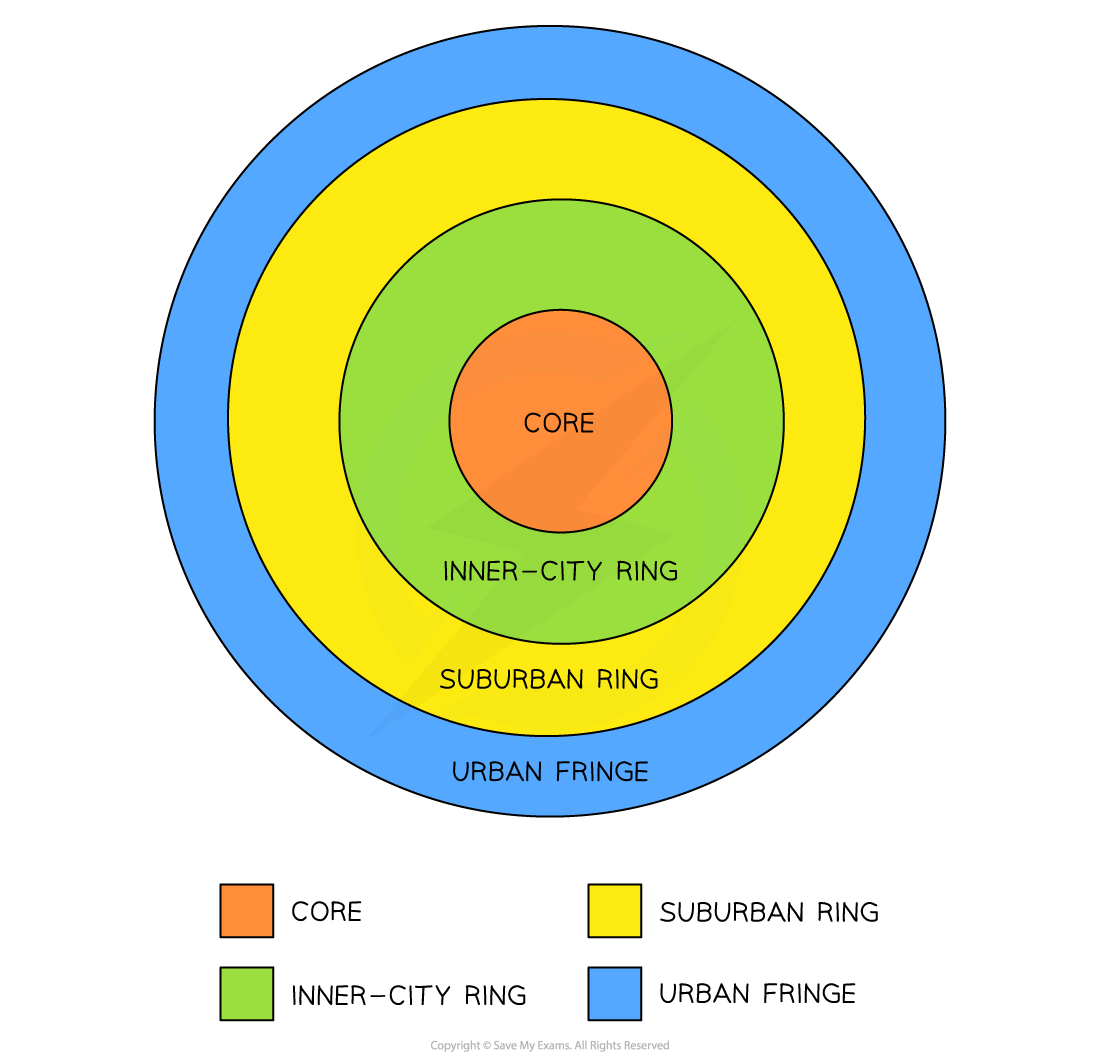Urban Land Values
- All urban settlements have recurring features:
- A central core or central business district (CBD)
- Industrial areas
- Different residential districts
- Shopping centres
- High-rise buildings
- Cultural and leisure areas
- Multi-storey car parks
- Bus and railway stations
- These features have created segregated land use over time
Land Values
- Segregation of land use is due to the urban land market
- Land that has 'purpose' will be valuable and cost more to buy or rent
- Usually retail shops can make money and seek prime positions
- Segregation is formed by retailers that can afford to be in those prime locations
- Therefore, land uses of similar activities will come together creating 'peaks' and 'troughs' of land values across the urban landscape
- There are two points to consider:
- The value of the land:
- Land value varies across the urban areas
- Value usually decreases from the centre, outwards
- Higher land prices are also found along main roads, urban hubs and around ring roads
- The location of the land:
- Location is important to value
- The closer to key functions, the higher the value
- Accessibility and desirability increase land value
- The value of the land:

Distribution of Urban Land Value




